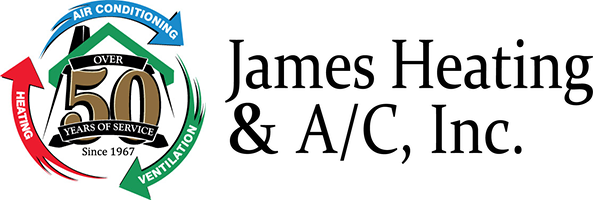
A furnace is almost always a background player at home, ensuring you're warm during the cold winter months. It frequently doesn’t get noticed until something goes wrong.
One source could be that your furnace has a cracked heat exchanger. It can be a safety risk, so it’s important to learn the signs of a cracked heat exchanger and what you should do if you suspect that may be the problem.
What Is a Heat Exchanger in a Furnace?
A heat exchanger helps transition heat from the combustion chamber in your furnace to the air that flows inside the air ducts. It usually accomplishes this via coils or tubes that heat the air while functioning as a barrier to keep the gasses produced in the combustion chamber, called flue gasses, from escaping out into your home.
Is a Cracked Heat Exchanger Dangerous?
Thanks to its central role, it’s no surprise that a damaged heat exchanger can be hazardous. Cracks in the heat exchanger can allow dangerous gasses – such as carbon monoxide, which can be lethal – to circulate across your home.
For this reason, don't ever run your furnace if you think you're dealing with a cracked heat exchanger, as this could make the whole household sick. Call an HVAC professional immediately if you think your heating has a cracked heat exchanger that needs repair.
Four Warning Signs of a Cracked Heat Exchanger:
- Furnace turns off: Cracks in the heat exchanger could cause your furnace to turn off.
- Unusual Smells: If the air leaving your furnace has a strong chemical odor, it may be evidence gas is seeping through cracks in your heat exchanger. These byproducts, which will often smell like formaldehyde, are a significant warning sign.
- Carbon monoxide alarm initiates or you feel poisoning symptoms: If a cracked heat exchanger is emitting carbon monoxide inside your home, your carbon monoxide alarm could go off or household members may struggle with signs of carbon monoxide poisoning. Symptoms include headaches, dizziness, weakness, nausea, vomiting or feeling tired. If an alarm goes off or you feel unusually tired, leave the home right away and then call for help.
- Soot: If you spot black sooty collecting near the exterior of your furnace, it’s more evidence something may be seriously wrong.
What to Do if the Furnace Heat Exchanger is Cracked
If you suspect your furnace has a cracked heat exchanger, contact a professional with extensive experience in furnace installation Lexington as soon as possible so they can examine your system and, if required, handle a furnace heat exchanger replacement. Costs often differ depending on the situation, but estimates can roughly suggest $1,000 to $3,000.
Estimates aside, the good news is that heat exchangers are often protected by the warranty. You should check the warranty paperwork on your furnace, since while the warranty won't always cover the entire cost of repairs, it can significantly shrink your bill.
How to Prevent a Cracked Heat Exchanger in Your Home
One of the easiest ways to minimize the risk of problems in your furnace overall is through consistent furnace maintenance. Furnaces offer the most benefits when they operate efficiently. Contacting a trained professional to check your furnace for old parts, dirty filters and other common problems can keep you from getting a big bill later on.
It’s also helpful to take a look at your furnace filters every few months – it’s recommended some filters be swapped out every 90 days or sooner if they are dirty or grimy. While the filters aren't a part of the heat exchanger itself, the strain of drawing air through a clogged filter makes your entire furnace work more vigorously to complete its job. And the harder your furnace needs to run, the more deterioration pieces like the heat exchanger will sustain.

